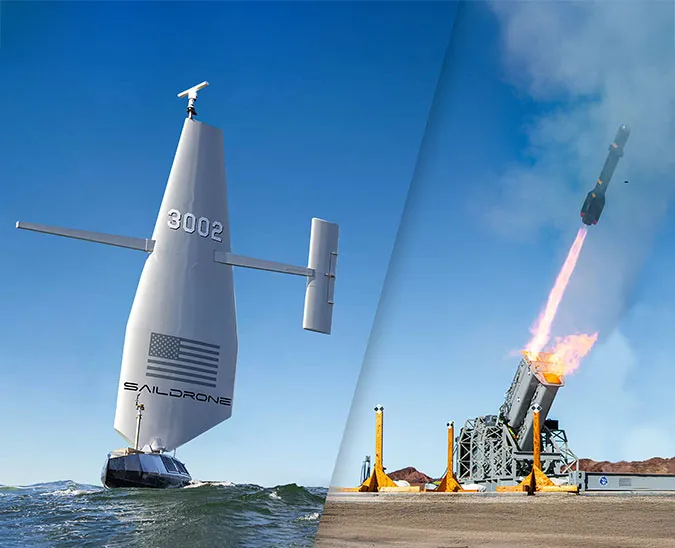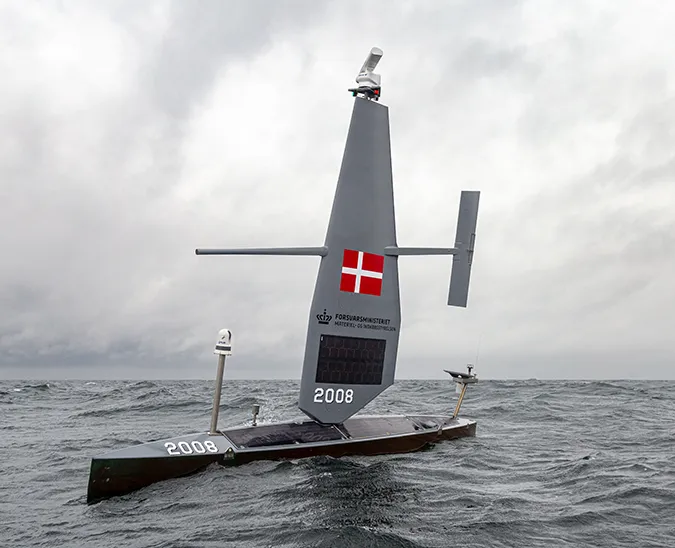Published on
Author
The Antarctic ecosystem, part of the Southern Ocean, is one of the most productive and diverse on the planet, and it plays an essential role in balancing the global climate. The 2019 Saildrone Antarctic Circumnavigation—the first autonomous circumnavigation of the Southern Ocean—endeavors to expose future generations to the rapid changes taking place in the Antarctic. This education outreach initiative leverages cutting-edge Saildrone technology to bring data-driven lessons to classrooms around the world.
Saildrone partnered with the 1851 Trust, an innovative UK-based education charity, to develop a series of lesson plans anchored in science, technology, engineering, math and related to issues in the Southern Ocean.
The lesson plans are organized around three aspects of the Antarctic ecosystem: Antarctic krill at the base of the food chain, the carbon cycle and ocean acidification, and penguins as an indicator of climate change.
Each module includes an entertaining and engaging video linking the topic to Saildrone’s cutting-edge technology, and three to five comprehensive lesson plans made up of a class presentation, teaching notes, and complementary worksheets for students. The modules are designed with middle-grade students in mind, kids ages 10-15.
Module 1 – Antarctic krill and its place in the global food web
Antarctic krill is one of approximately 85 species of krill on the planet. It is the foundation of the Antarctic food chain and the primary source of nourishment for whales, penguins, seabirds, seals, and other larger species, but the krill population may be at risk due to commercial fishing, a reduction in sea ice in the Southern Ocean, and changing water temperature.
In Module 1, students will learn about food chains and food webs, the interdependent relationships between predator and prey, and how keystone species like krill affect and are affected by their environment, along with a range of relevant scientific terminology.
Module 2 – Ocean acidification
The Southern Ocean is known as a “carbon sink,” that is, an area of ocean capable of absorbing a relatively large amount of carbon from the atmosphere. But as the water absorbs more carbon, it also becomes more acidic. Ocean acidification is one of the lesser known effects of ever-increasing amounts of CO2 in the atmosphere.
In Module 2, students will discuss the carbon cycle—the series of processes by which carbon is introduced into the atmosphere and exchanged between air, land, sea, and living organisms—the difference between global warming and climate change, how carbon dioxide increases the acidity of the ocean and the effect on organisms, and what the term “carbon footprint” really means.
Module 3 – Penguins and statistics
Penguins spend about three-quarters of their life in the water foraging for squid, small fish like sardines and anchovy, and Antarctic krill. Scientists believe there is a relationship between climate changes taking place in Antarctica and the time and distance penguins spend looking for food.
In Module 3, students will consider the data cycle and the characteristics of a good hypothesis, and learn to calculate mean, mode, median, and range and how to accurately interpret, analyze, and present data.
Download the lesson plans
Download the lesson plans, free for teachers and educators, at saildrone.com/missions/antarctica-lesson-plans.
The 2019 Saildrone Antarctic Circumnavigation is generously sponsored by the Li Ka Shing Foundation.





